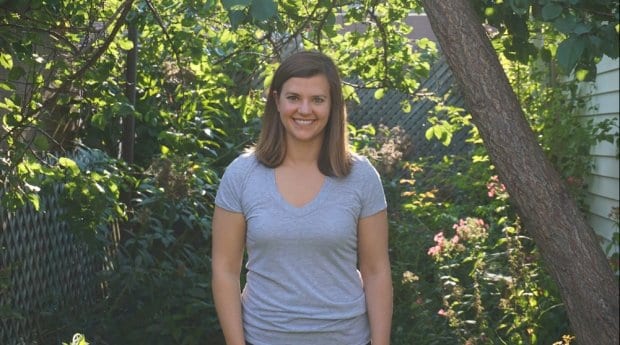We don’t usually think of science and poetry as bedfellows, but look closely and you’ll see how metaphorical the language of science can be and the precision and constraints of some schools of poetry.
Julie Joosten took a close look at this odd pairing, and for her first collection of poetry — Light Light — she found home in the fantastic, pre-disciplinary world of the early life sciences, botany in particular. She mines the texts from the 18th and 19th centuries written by the pioneering women that are part travelogues, part science, part art and part chronicles of imperial expansion. Yet the poems feel very contemporary and intimate, never straightforwardly psychological, always probing the precincts of the observing, feeling conscience and blending its history with its present.
Joosten first took interest in the history of scientific knowledge by reading about plants. “Certain plants and plant derivatives had surprisingly dramatic roles in historical events. If the British weren’t able to break the Spanish monopoly of the South American sources of quinine and use it to treat malaria, they’d never have been able to colonize Africa. Or look at the history of opium in international relations.” But as she read further back into the history of botany, she realized that the science of plants began as very much an art. “The research required hand-drawn illustrations, with both scientific and artistic attention to detail. Before botany was science, it consisted of people who would just ‘botanize’ — today we would call them amateur botanists — and build the new branch of knowledge outside official institutions.”
Darwin, also very present in Joosten’s poems, was an amateur scientist himself. A lecture by the British literary scholar Gillian Beer on Darwin’s keen attention to the tendrils of plants was what originally sparked her interest in Darwin. “In his book The Power of Movement in Plants, there are observations like ‘at hour 36, the tendril wrapped itself around the pole; at hour 40, it unwrapped itself.’ Darwin had a most amazing form of meditative attention, which I’d like to be able to emulate in my poetry,” she says.
Darwin’s use of metaphor also struck her as imaginative. “Metaphors we use are usually unidirectional — a human mind can be like a stormy sea, for example, but the other way around won’t work. In Darwin, we can find bidirectional metaphors. The human brain is like the plant roots, but also the reverse; the roots are like the human brain. This changes our usual anthropomorphic habits. We’re not solely projecting unto objects and other species; they in turn change our self-definitions.”
Joosten’s inspiration for Light Light also comes from British and American poetry of the 19th century, the subject of her PhD dissertation at Cornell University. The kind of attention the Romantic poets gave to their surroundings was always appealing to her. “They had great interest in the natural world and developed many unconventional ways of interacting with it, being in it, thinking along with it.” Wordsworth, Keats, Shelley and Emily Dickinson just get better with time. “I love the more indirect moments, where you catch a kind of thought that seems unbound to a subject — a thought or a feeling that exists not solely in them and not solely in the world, but in the interface between the two.”
Dorothy Wordsworth’s diaries have been a revelation for Joosten, although the sibling of the famous poet reveals little of herself. She would observe the same thing from a different perspective on multiple days or weeks and let the reader witness “a beautiful progression that doesn’t feel like progression,” Joosten explains. Wordsworth adopts a declarative tone, and her entries can read as a disembodied account of what she’s seen. “Then, of course, there are the tender or hysterical or ridiculous domestic moments, too. ‘William has cold again, I slept in the closet so he can have the warm bedroom.’ There’s all these gender dynamics at play. Coleridge and Wordsworth would read her journals and take things out and use them in their poems. You can easily track down parts of her diary in certain poems.”
In day-to-day life, does Joosten care for plants? “Absolutely, but I’m a gardener without natural talent. It takes me a while,” she says. She lives with her partner and their two dogs in Little Italy and gets along gloriously with her elderly Italian neighbours, who sometimes observe her gardening efforts in affable disbelief, occasionally volunteering help. She has more luck with indoor plants. “We have an orchid that survived its dormancy period and , two years, in continues to grow.” It just may be the same orchid that appears in what is possibly the tenderest poem of the collection, “Touch”: “Tenderness moves between us / as water moves / through the roots / of the plant.”

 Why you can trust Xtra
Why you can trust Xtra


